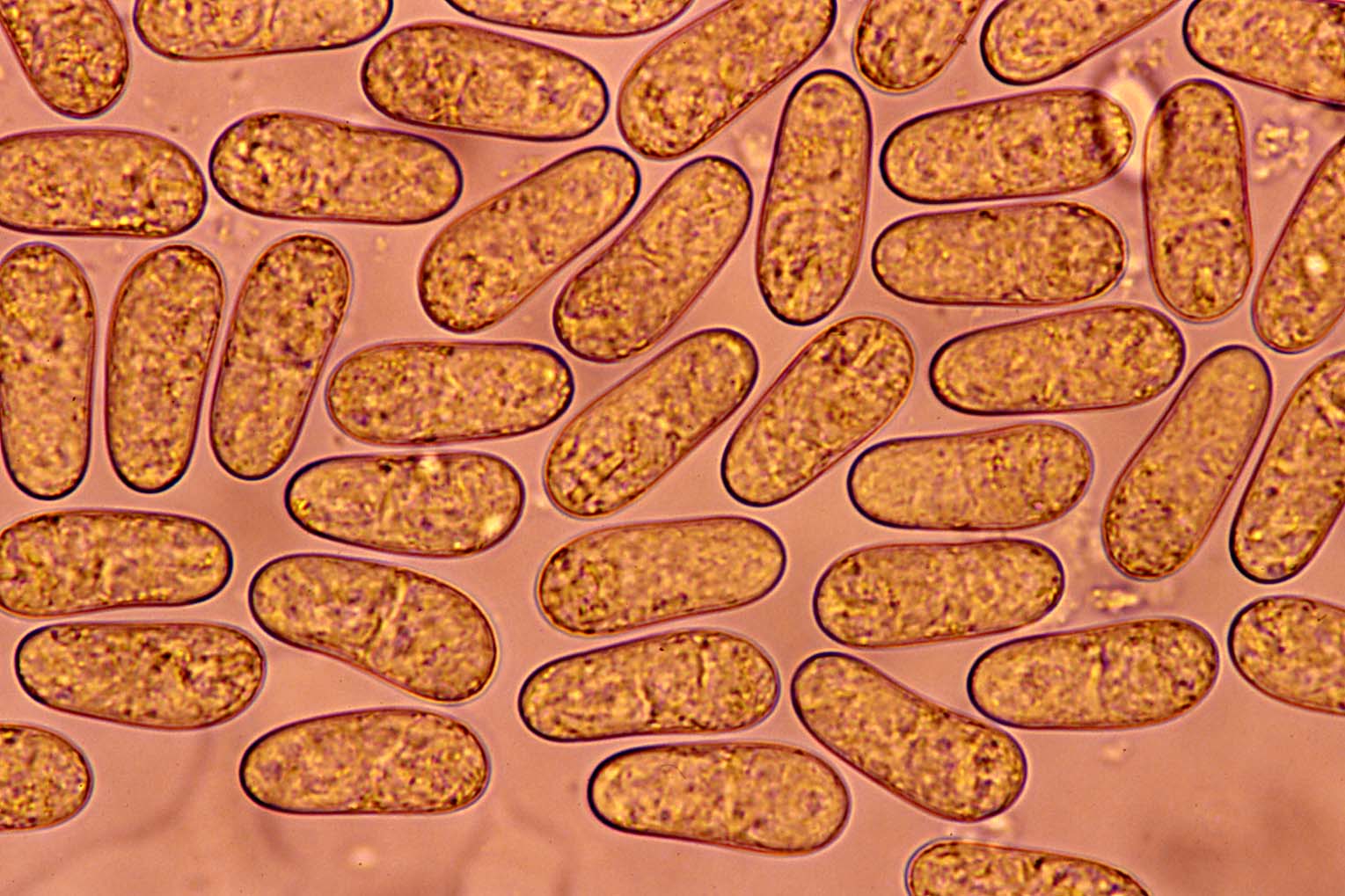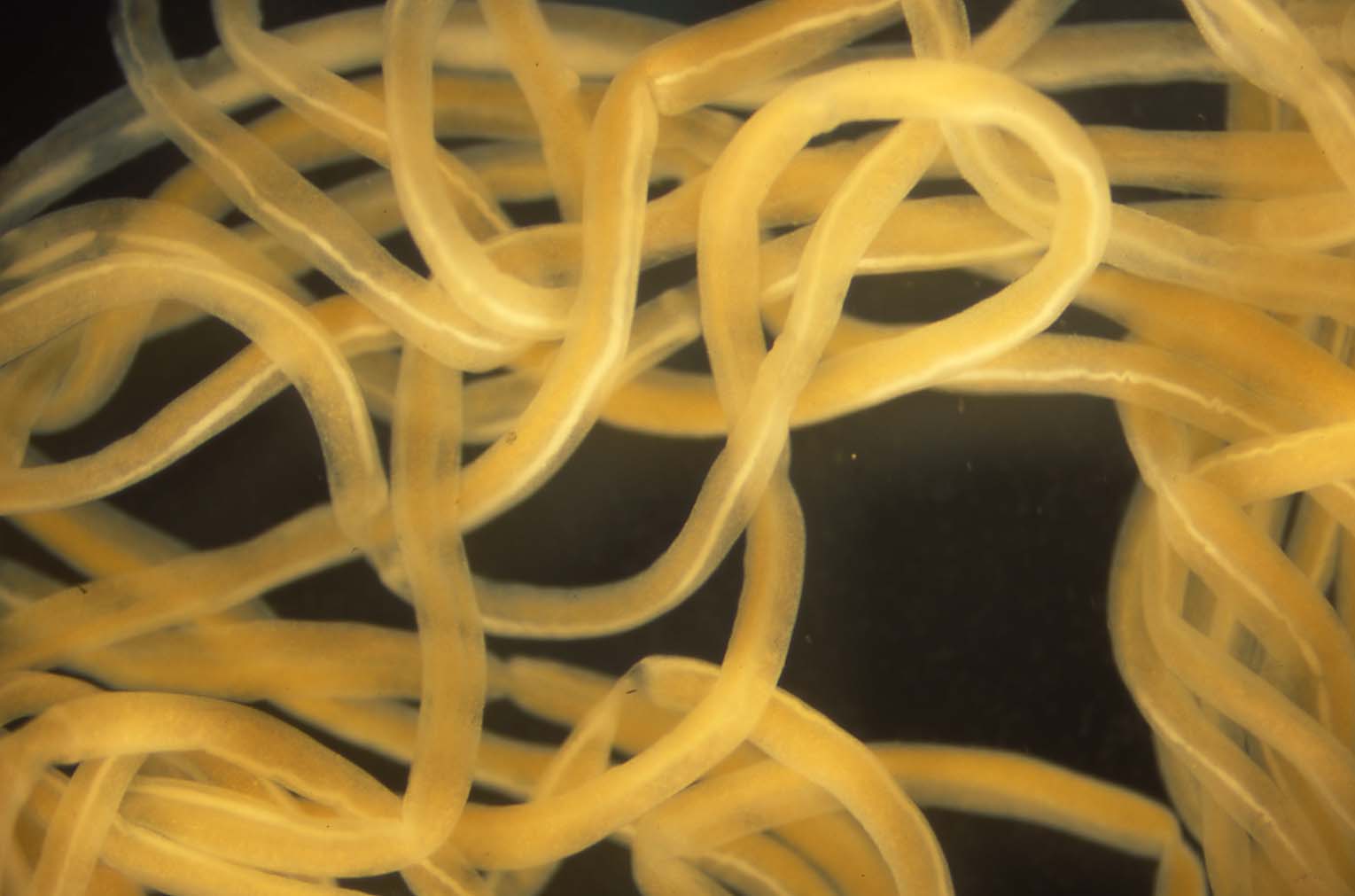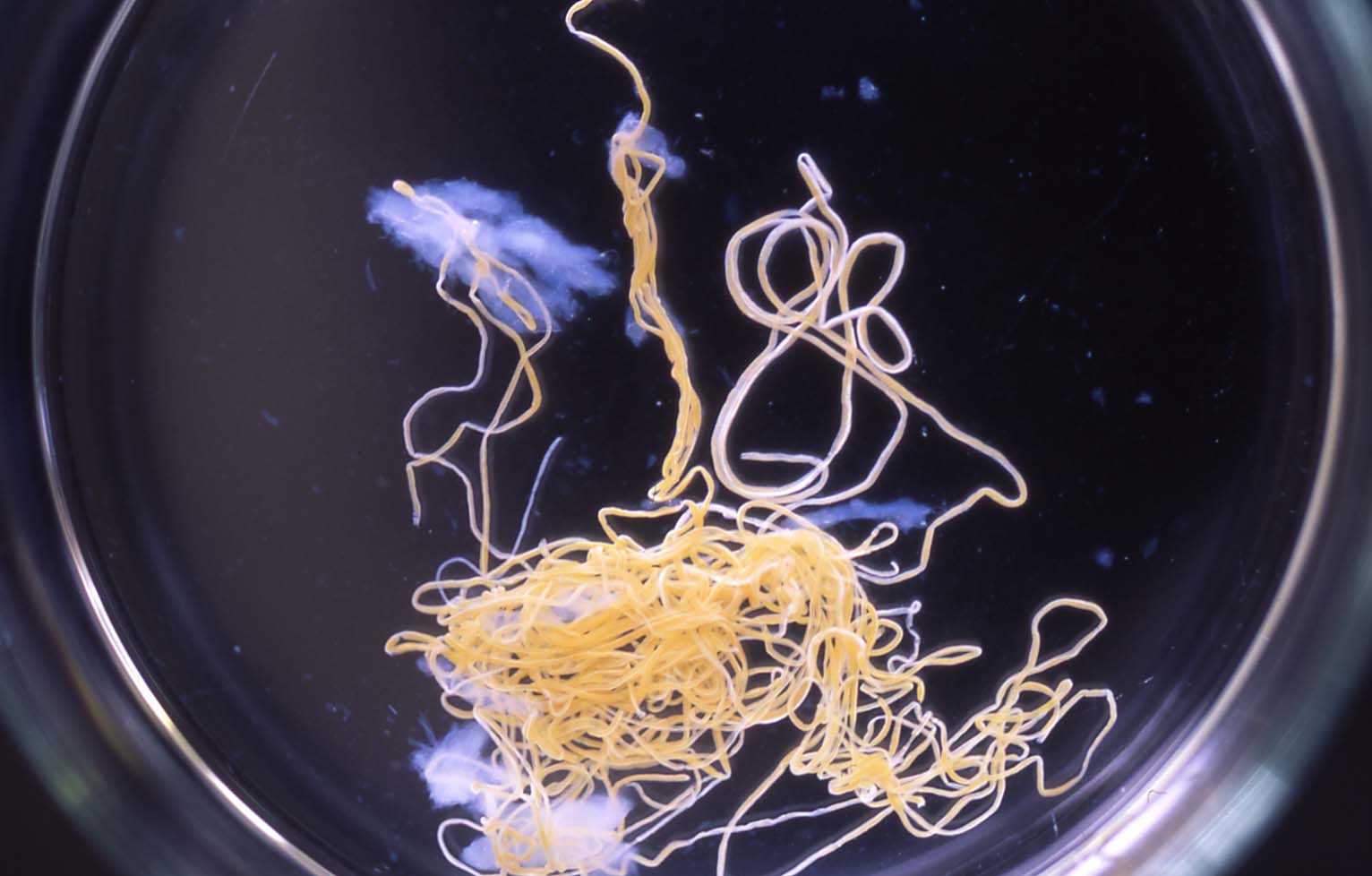
Fig. 1. A yellowish sack in the muscle of red sea bream
Fig. 5. Parasite eggs of G. okushimai.


| Parasite | Gonapodasmius okushimai |
|---|---|
| Taxonomy | Plathyhelminthes, Trematoda, Didymozoidae |
| Host | Red sea bream (Pagrus major) |
| Infection site | Trunk muscle |
| Clinical sign | No external signs are evident. A yellowish amorphous or elliptical sack (a few cm) is observed in the trunk muscle (Fig. 1). Yellow filamentous parasite is folded inside the sack (Fig. 2). |
| Parasitology | A sack includes 2 adults, one is male, the other is female. The body is cylindrical, extremely long (several tens of cm to several m in female) (Fig. 3 and 4) (Ishii, 1935) and filled with the eggs (38-43 (average 40.2) mm × 15-19 (17.1) mm) (Fig. 5). |
| Health hazard | Since this parasite is not infectious to human, it is harmless in food hygiene. |
| Diagnosis | Check the parasite inside the sack. |
| Other information | Diseased fish possessing several dozens of cysts of the parasite in the muscle has been found locally in Takahama, Ehime Prefecture. Such fsh appears in spring to summer, and decreases in winter (Nakajima et al., 1974). |
| References | Ishii, N. (1935):
Studies on the family Didymozooidae (Monticelli, 1988). Jap. J. Zool., 6,
279-335. Nakajima, K., K. Sugiyama and S. Egusa (1974) A trematode, Gonapodasmius okushimai Ishii, found in the muscle of red sea bream, Pagrosomus major. Fish Pathol., 8, 175-176. (In Japanese) |
Fig. 4. A cylindrical worm of G. okushimai.
(Photos by K. Momoyama (2-5))


Fig. 3. G. okushimai collected from red sea bream

Fig. 2. Parasite worm of G. okushimai.